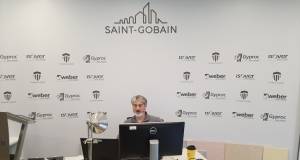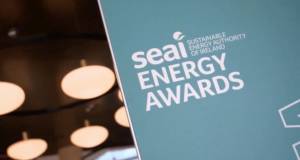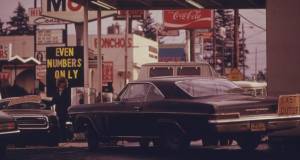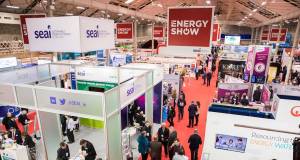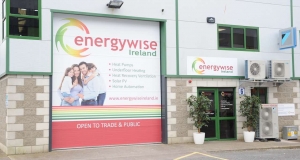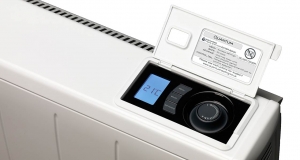- Renewable Energy
- Posted
ESB to purchase electricity from domestic wind turbines

The Commissioner for Energy Regulation has announced that the ESB is to buy electricity from so-called “micro generators” - householders who have their own wind generators or other renewable electricity systems. The price has been set at 9c per unit.
The Commissioner for Energy Regulation has announced that the ESB is to
buy electricity from so-called “micro generators” - householders who
have their own wind generators or other renewable electricity systems.
The price has been set at 9c per unit.
Turbotricity, an Irish company currently developing household wind turbines has welcomed the move. “Up to now, households with a wind turbine had to use a large bank of forklift batteries to store their power, involving additional costs and maintenance. It makes far more sense to sell surplus power to the grid and buy back extra energy when it is needed,” said Quentin Gargan, Turbotricity's managing director.
The company has argued that there is an opportunity for Ireland to become a world leader in the production of domestic wind turbines. “We have the best wind in Europe, and a high percentage of us live in one-off houses in good wind energy sites,” said Gargan. “A turbine which has established a reputation for survival on our Atlantic coastline will find easy access to other EU markets”.
Turbotricity, based in West Cork, is launching a rugged 2.5Kw turbine designed for Atlantic conditions. On most sites, the company expects to install these for between less than €12,000, including a free-standing tower and grid controller. The company’s development has been hamstrung because up to now, ESB would not pay for surplus electricity which was simply spilled onto the grid.
“We strongly argued for a higher feed-in tariff to support this industry”, said Gargan. “When it comes to wind energy, the large turbines are dominated by other countries, against whom Irish industry can never hope to compete. However, domestic wind turbines are made with smaller components, all of which could easily be manufactured here, and it is important that Ireland develops a strong industry in this growing market sector. It is our aim to mass produce turbines and bring prices down so that safe and effective wind turbines can have a sensible payback time, and the current offering from ESB will certainly help”.
Gargan has lived and worked with wind turbines for almost ten years. For many years he has run popular courses for DIY enthusiasts on renewable energy at his home near Bantry where he and his family live in a low-energy house powered by a 2.5kw turbine and using solar panels for both hot water and electricity. His family has used an electric Citroen Berlingo for two years and initially they had an interest in charging this using a second wind turbine. However, Quentin was dissatisfied with models on the market at the time and set about designing a turbine for Irish conditions.
The Commissioner for Energy Regulation announced ESB’s suggested feed in tariff of 9c per KwHr on 16 December. A consultation period of one month was allowed.
Turbotricity, an Irish company currently developing household wind turbines has welcomed the move. “Up to now, households with a wind turbine had to use a large bank of forklift batteries to store their power, involving additional costs and maintenance. It makes far more sense to sell surplus power to the grid and buy back extra energy when it is needed,” said Quentin Gargan, Turbotricity's managing director.
The company has argued that there is an opportunity for Ireland to become a world leader in the production of domestic wind turbines. “We have the best wind in Europe, and a high percentage of us live in one-off houses in good wind energy sites,” said Gargan. “A turbine which has established a reputation for survival on our Atlantic coastline will find easy access to other EU markets”.
Turbotricity, based in West Cork, is launching a rugged 2.5Kw turbine designed for Atlantic conditions. On most sites, the company expects to install these for between less than €12,000, including a free-standing tower and grid controller. The company’s development has been hamstrung because up to now, ESB would not pay for surplus electricity which was simply spilled onto the grid.
“We strongly argued for a higher feed-in tariff to support this industry”, said Gargan. “When it comes to wind energy, the large turbines are dominated by other countries, against whom Irish industry can never hope to compete. However, domestic wind turbines are made with smaller components, all of which could easily be manufactured here, and it is important that Ireland develops a strong industry in this growing market sector. It is our aim to mass produce turbines and bring prices down so that safe and effective wind turbines can have a sensible payback time, and the current offering from ESB will certainly help”.
Gargan has lived and worked with wind turbines for almost ten years. For many years he has run popular courses for DIY enthusiasts on renewable energy at his home near Bantry where he and his family live in a low-energy house powered by a 2.5kw turbine and using solar panels for both hot water and electricity. His family has used an electric Citroen Berlingo for two years and initially they had an interest in charging this using a second wind turbine. However, Quentin was dissatisfied with models on the market at the time and set about designing a turbine for Irish conditions.
The Commissioner for Energy Regulation announced ESB’s suggested feed in tariff of 9c per KwHr on 16 December. A consultation period of one month was allowed.
Last modified on Tuesday, 10 March 2009 16:49


